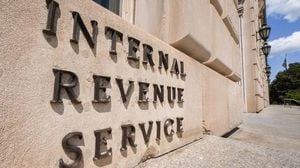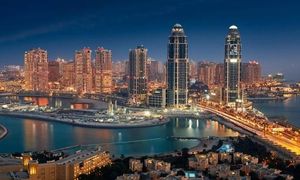Lebanon is once again at the center of a regional storm, as its army chief briefed the government on the formidable challenge of disarming Hezbollah, while Israeli airstrikes rattled the country’s southern and northeastern regions. The developments, which unfolded on October 6, 2025, have reignited old tensions and cast a spotlight on the delicate balance of power, sovereignty, and security in Lebanon.
According to reports from the Associated Press and beritasriwijaya.co.id, General Rudolph Haikal, the Lebanese army chief, presented the government with the military’s plan to disarm Hezbollah. This marked the first time such a plan has been formally briefed to Lebanon’s top officials. Yet, the details remain shrouded in secrecy. Information Minister Paul Morcos told journalists that the Cabinet decided to keep both the plan and all related discussions “secret.” The move reflects the high stakes and sensitivity of the issue, as Lebanon grapples with both internal divisions and external threats.
The timing of the briefing could hardly have been more fraught. On the same day, Israeli airstrikes killed two people in southern Lebanon, including a senior Hezbollah operative, and targeted training centers in the northeastern Hermel region. The Israeli military said the drone strike near Nabatiyeh killed Hassan Atwi, a key official in Hezbollah’s Aerial Defense Unit, along with his wife. Shortly afterward, the airstrikes struck Hezbollah’s elite Radwan Forces training centers, signaling that Israel remains vigilant and ready to act against perceived threats from across the border.
This latest escalation comes against a backdrop of nearly daily Israeli strikes and heightened border tensions. Hezbollah, which maintains both a powerful military wing and significant political clout in Lebanon, has flatly rejected any discussion of disarmament as long as Israel continues to occupy several hills along the border and carries out frequent attacks. The group’s stance is clear: as long as the threat from Israel persists, its arsenal will not be up for negotiation.
Hezbollah’s dual role—as both a political party and a militant organization—has long complicated Lebanon’s internal dynamics. The group enjoys substantial support among the Shia population and has positioned itself as the country’s defender against Israeli aggression. Its military strength is bolstered by backing from Iran and Syria, while its political influence is felt throughout Lebanon’s parliament and government. This intertwined presence makes any attempt at disarmament a daunting proposition, requiring a careful navigation of both military realities and political sensitivities.
General Haikal’s briefing follows a month after the Cabinet first discussed the military’s plan to put all weapons under state control. The initial goal was ambitious: disarm Hezbollah by the end of 2025. However, officials have since acknowledged that Lebanon’s limited resources make this deadline unattainable. The current strategy, as reported by AP, is to clear a stretch of territory south of the Litani River—an area that has often been a flashpoint in past conflicts—by the end of November, before moving on to subsequent phases.
Lebanon’s army, often seen as a rare unifying force in a country riven by sectarian divisions, faces immense challenges. The effects of the country’s economic meltdown, which began in 2019, have severely weakened its capabilities. According to the World Bank, Lebanon’s economy contracted by over 6% in 2023, exacerbating the government’s difficulties in managing security, rebuilding infrastructure, and enforcing national policies.
In this bleak economic landscape, international support has become crucial. Last week, the United States approved $230 million in aid for Lebanon’s army and police forces—$190 million earmarked for military training and equipment, and $40 million for the Internal Security Forces. Ed Gabriel, president of the American Task Force on Lebanon, emphasized the importance of this assistance, stating that the Lebanese government “has to make it clear that it is not backing down from full disarmament of Hezbollah.” He also pointed out a significant weakness in the current plan: “they don’t have a specific timetable.”
The international community’s position on Hezbollah is far from uniform. The United Nations Security Council Resolution 1701, passed after the devastating 2006 Lebanon War, calls for the disarmament of all armed groups in Lebanon, including Hezbollah. Yet, as the United Nations Interim Force in Lebanon (UNIFIL) has repeatedly reported, violations of the ceasefire agreement continue, with both Israel and Hezbollah accused of escalating tensions. While some countries label Hezbollah a terrorist organization, others see it as a legitimate political player—a division that complicates the pursuit of a unified international approach.
The scars of recent conflict are still fresh. The 2023-2024 Israel-Hezbollah war, which erupted after Hezbollah began firing rockets across the border in response to a deadly Hamas-led incursion into southern Israel, left more than 4,000 people dead in Lebanon and caused an estimated $11 billion in destruction, according to the World Bank. In Israel, 127 people lost their lives, including 80 soldiers. The war ended with a ceasefire in November, but the underlying issues remain unresolved, and both sides continue to prepare for the possibility of renewed hostilities.
For Lebanon, the path forward is fraught with uncertainty. The Lebanese government faces mounting pressure from both domestic and international actors to take decisive action on Hezbollah’s disarmament. Yet, the reality on the ground is complex. Many Lebanese citizens are wary of further conflict, particularly as they struggle with economic hardship and political instability. Public sentiment, shaped by years of turmoil and repeated cycles of violence, is cautious, if not outright skeptical, of sweeping changes that could provoke another round of fighting.
Hezbollah’s own position remains resolute. The group has made it clear that it will not consider disarmament while Israel maintains its military presence along the border and continues its airstrikes. This stance, rooted in both genuine security concerns and a desire to maintain its influence, poses a fundamental obstacle to any efforts at national reconciliation or demilitarization.
Despite these challenges, the Lebanese Army’s commitment to addressing the issue is evident. General Haikal’s briefing, while lacking in public detail, signals a willingness to engage with the problem head-on. The government’s decision to keep the plan secret may reflect a desire to avoid inflaming tensions or tipping its hand prematurely—but it also underscores the gravity of the situation.
Ultimately, any successful disarmament initiative will require a nuanced approach that takes into account the diverse interests of Lebanon’s population, the entrenched position of Hezbollah, and the volatile regional context. International support—whether financial, diplomatic, or technical—will be essential in helping Lebanon navigate this perilous terrain.
As Lebanon stands at this crossroads, the decisions made in the coming months will shape not only its own future, but also the stability of a region where the past is never far from the present.




